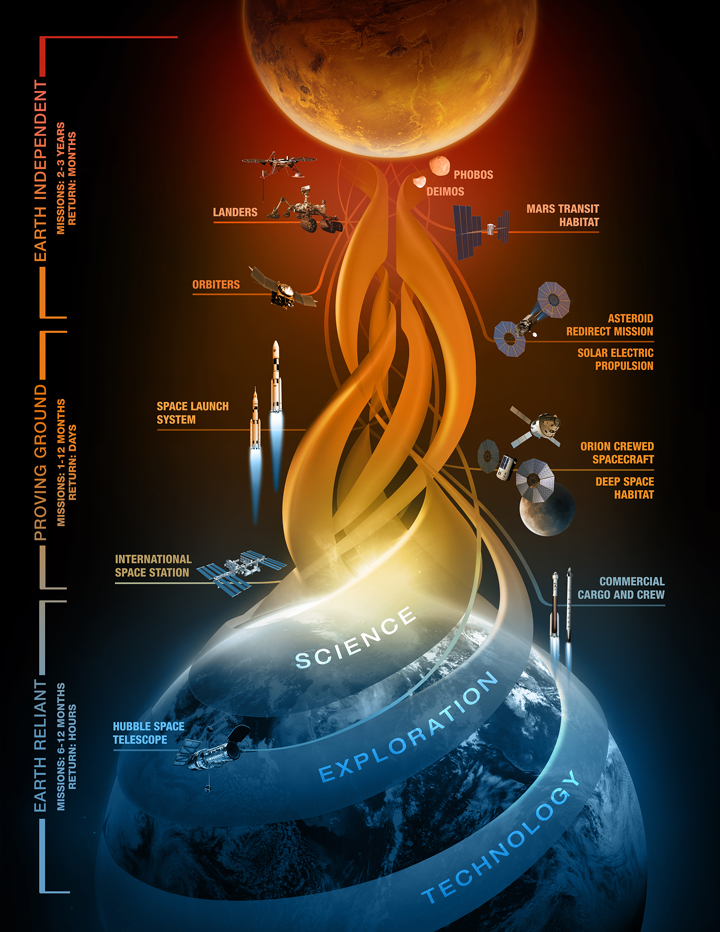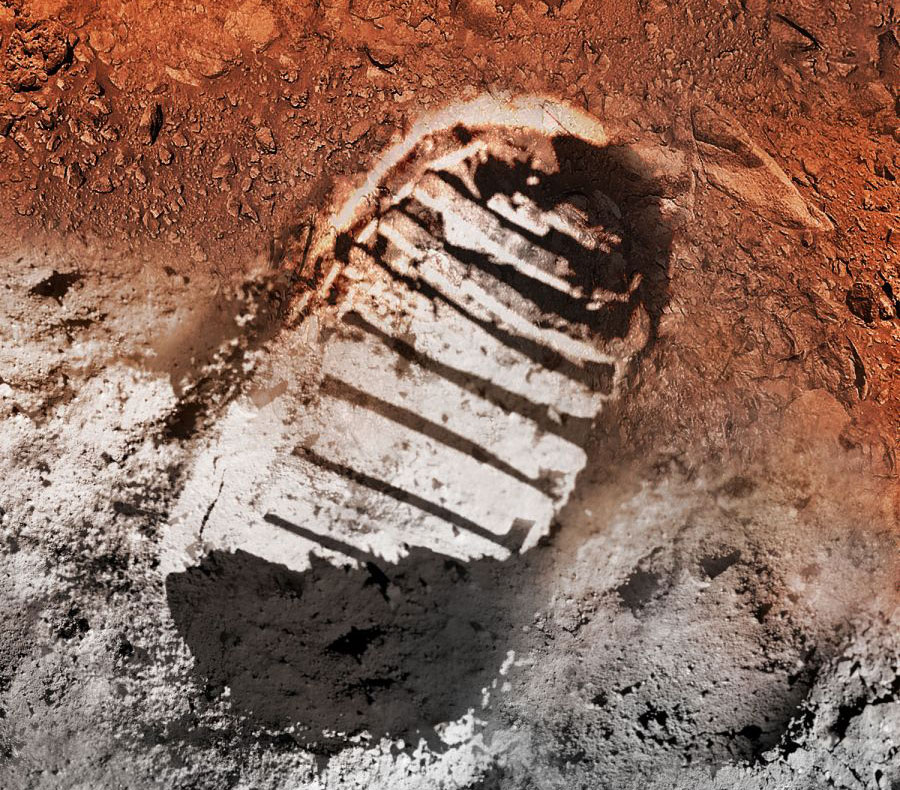While the new movie The Martian might have bolstered the hope of one day travelling and working on the red planet, the realities and challenges that lie on the road to Mars are enormous.

That’s not to say they are insurmountable. Earlier this month, NASA released a 35-page plan entitled, “NASA’s Journey to Mars: Pioneering Next Steps in Space Exploration” outlining what it says is its steps for getting humans to Mars.
The new NASA document breaks down the journey into three distinct steps: Earth reliant; Proving ground; and Earth independent.
The Earth reliant process largely takes place aboard the International Space Station, which would include, for example, the current One-Year Mission with NASA astronaut Scott Kelly; the proving ground is the stage where humans learn to live and work further away, mainly around the moon; and finally, the Earth independent activities are the final steps, perhaps a low-Mars orbit or a visit to one of its moons.
The only problem is, NASA doesn’t present a timeline. So how likely is it that anyone alive today will see someone walk on Mars?
“If you look at that, you still don’t know when they’re going or how,” said Randy Attwood, executive director of the Royal Astronomical Society of Canada and space historian. “The whole moon program had a definite schedule and budget. Early on they changed their minds on how they’d do it…but they committed to doing it.”

Get breaking National news
One of the major hurtles NASA faces today — that it didn’t in the 1960s — is funding.
Plans to get humans to the moon begun with a definite goal set by U.S. President John F. Kennedy; there was an impetus to beat the Soviet Union to the moon, to assert not just worldwide dominance, but technological dominance.
There is no such drive to get humans to Mars.
“Unfortunately, you have to run space programs on public interest, but that’s just not enough,” said Attwood.
Another problem is the changing administrations within the U.S. government. Every time a new president is elected, he or she will have a different plan for the space program than his or her predecessor. A perfect example is NASA’s Constellation program initiated by President George W. Bush in 2004. Never heard of it? That’s because it got scrapped when President Obama took office in 2009.
Parts of it live on today at NASA, however; for example the Orion spacecraft that is included in its current vision to getting us to Mars.
Money from Congress has plummeted since the Apollo years, going from roughly 4.5 per cent of the United States’ federal budget to less than half a per cent. And, to use the saying from the movie The Right Stuff, “No bucks, no Buck Rogers.”
“NASA of the ’60s is long gone,” Attwood said.
The persistent whispers about heading to Mars have lasted since the Apollo days. For some, heading to the moon was just the first step to the science-fiction future with bases and spaceships. But that never materialized.
READ MORE: Elon Musk suggests nuking Mars on ‘The Late Show with Stephen Colbert’
War, politics and the economy took precedence over what some considered to be frivolous space exploration. Human space exploration took a backseat, and it’s never really been able to recover.
To be fair, going to Mars presents challenges unlike anything we’ve ever seen. There is the distance — due to the orbits of our planets we only have two windows of opportunity a year to take advantage of the distance. There’s the challenge of getting enough fuel and supplies up into orbit for the likely six- to nine-month trip, an expensive endeavour. And then there are the physical limitations: space radiation presents a possibly deadly, if not life-shortening possibility to astronauts on long-duration space flights.
“Going to the moon was extremely difficult, but it’s nothing compared to going to Mars,” said Attwood.
But going to Mars isn’t just a NASA endeavour. While they are the space agency with a large budget, there are other countries who could attempt the undertaking. In 2014, India sent its first orbiter to the red planet.
And then there’s private enterprise. Billionaire founder of SpaceX, Elon Musk, a man who seemingly doesn’t believe in limitations — has long set his sights on Mars. In January, he said he would reveal plans for SpaceX’s Mars Colonial Transporter by year’s end (we’re still waiting).
Whether it be private enterprise or NASA or another country, Mars isn’t a walk in the park. The distance, the inhospitableness, the physical challenges are all very real. And seeing humans walk on Mars will likely take longer than we think.



Comments